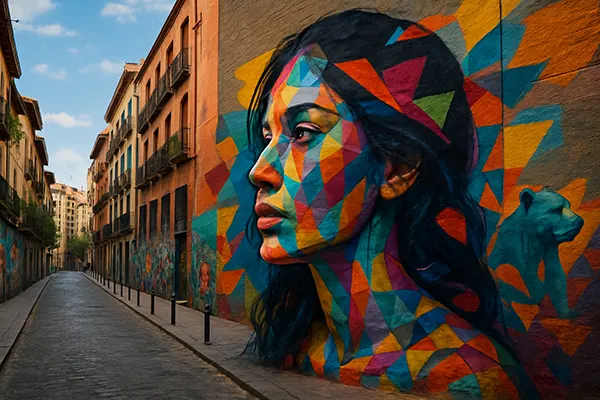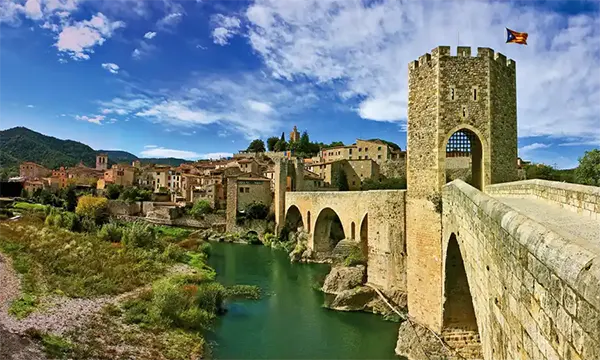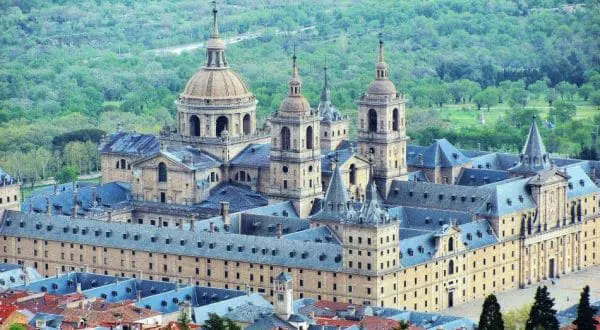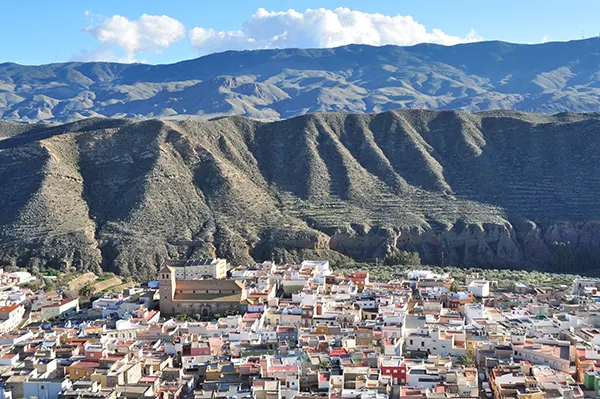Madrid Street Art: Where to Find Urban Creativity in Spain’s Capital

Madrid is more than a historical and cultural landmark — it’s a living canvas that transforms walls into messages, ideas and emotions. Street art in the Spanish capital continues to evolve, highlighting pressing social themes and bold artistic trends. For locals and travellers alike, discovering murals and installations is a way to understand Madrid’s pulse. This article explores where to find the city’s best urban art, who the artists behind it are, and what legal boundaries shape their work.
Where to Find Street Art in Madrid: Key Neighbourhoods
Madrid’s dynamic urban art scene finds a natural home in Lavapiés. This multicultural district blends traditional Madrid life with artistic subcultures. Here, alleys and façades are decorated with ever-changing murals that reflect themes of identity, migration and protest. The annual CALLE street art festival revitalises this area every spring with new creations and public interventions.
Another hotspot is Malasaña — a bohemian quarter known for its vintage spirit and creative freedom. It serves as an open-air gallery of stencils, paste-ups and wall paintings. Many storefronts and apartment blocks feature artworks with political messages or visual experiments that reflect the voice of Madrid’s youth and counterculture.
Tabacalera, formerly a tobacco factory and now a self-managed cultural centre, offers perhaps the most concentrated area for street art. Located in Embajadores, its outer walls are painted by both local and international artists. Inside, workshops and exhibitions promote artistic freedom and community engagement, acting as a bridge between informal art and institutional support.
The Role of Local Communities in Preserving Urban Expression
Street art in Madrid is not only shaped by the artists themselves, but also by active neighbourhood involvement. Local groups often protect murals from being removed and encourage newcomers to respect previous work. In Lavapiés, community-led projects regularly engage residents and artists to co-create inclusive public art.
In Malasaña, local businesses often commission street artists to decorate their shutters, contributing to a visual identity that makes the district recognisable and culturally rich. These efforts also function as passive resistance against the gentrification that threatens Madrid’s urban culture.
Tabacalera’s role as a semi-institutional space offers a rare model where grassroots creativity and civic oversight coexist. Although legally part of the Spanish Ministry of Culture, it remains largely self-governed and continues to support alternative voices.
Famous Street Artists of Madrid and Their Signatures
One of the most recognisable figures in Madrid’s street art scene is Okuda San Miguel. Known for his multicoloured, geometric works and surreal figures, Okuda’s murals appear not only in Madrid but around the world. In the capital, his vibrant work can be found in residential districts and collaborative cultural spaces.
El Rey de la Ruina — “The King of Ruin” — is another prominent name. His signature character is a heart with legs, arms, and expressive eyes. His works are emotional and intimate, often touching on themes like love, fear, and resilience. His murals are scattered across Lavapiés and Carabanchel, often surprising passers-by in narrow lanes and derelict corners.
Other notable artists include Sabek, known for powerful representations of nature and animals, and Muelle, a graffiti pioneer from the 1980s whose legacy is foundational for Madrid’s street art identity. Many new-generation artists cite Muelle’s early tags as their inspiration for picking up a spray can.
How Artists Build Their Reputation Beyond the Streets
Many Madrid-based artists have successfully crossed over into gallery spaces, festivals and international projects. Okuda, for example, has collaborated with brands, curated global exhibitions and launched large-scale sculptures. Yet he continues to return to public spaces, staying true to his roots.
El Rey de la Ruina organises mural workshops and participates in cultural dialogues. By engaging in educational initiatives and collaborating with local councils, he balances artistic recognition with community engagement.
Digital visibility also contributes to an artist’s profile. Instagram and dedicated urban art websites allow artists to showcase their work, find new walls and gain global appreciation. This online presence reinforces the transient nature of street art, making its moments last beyond the physical decay.

Legal Boundaries: When Art Becomes Vandalism
Street art in Spain operates in a legal grey area. While graffiti is often punished under municipal laws as property damage, murals created with the owner’s permission are considered legal. However, the boundary is thin, and artists frequently take risks when working spontaneously or without approval.
Madrid’s city authorities occasionally launch campaigns to clean unauthorised graffiti, especially in touristic areas. Yet, many residents and officials recognise the cultural value of murals, especially when they attract visitors and enrich neighbourhoods. As a result, some districts offer legal walls where artists can paint without fear of fines or arrest.
Tabacalera stands out as a legal canvas, where curated street art is openly encouraged. Other initiatives, such as the CALLE festival, are city-supported and ensure that urban art is regulated without stifling creativity. Still, the balance between preservation and expression remains delicate.
The Future of Street Art in Madrid
The city’s approach to street art is gradually evolving. From harsh enforcement to creative tolerance, Madrid now supports more initiatives that integrate street art into cultural planning. Festivals, educational programmes and artist grants are helping to formalise what was once considered illegal expression.
Technological tools are also aiding the transition. Interactive maps and smartphone guides allow residents and tourists to explore murals, track changes, and learn about the artists. These platforms contribute to greater understanding and reduce vandalism by highlighting curated and legal work.
Looking ahead, Madrid’s street art will likely continue to oscillate between rebellion and recognition. As the city grows, it must decide whether to embrace its walls as public forums or maintain tighter control. The ongoing dialogue between artists, communities and institutions will determine the future of this vibrant urban voice.




